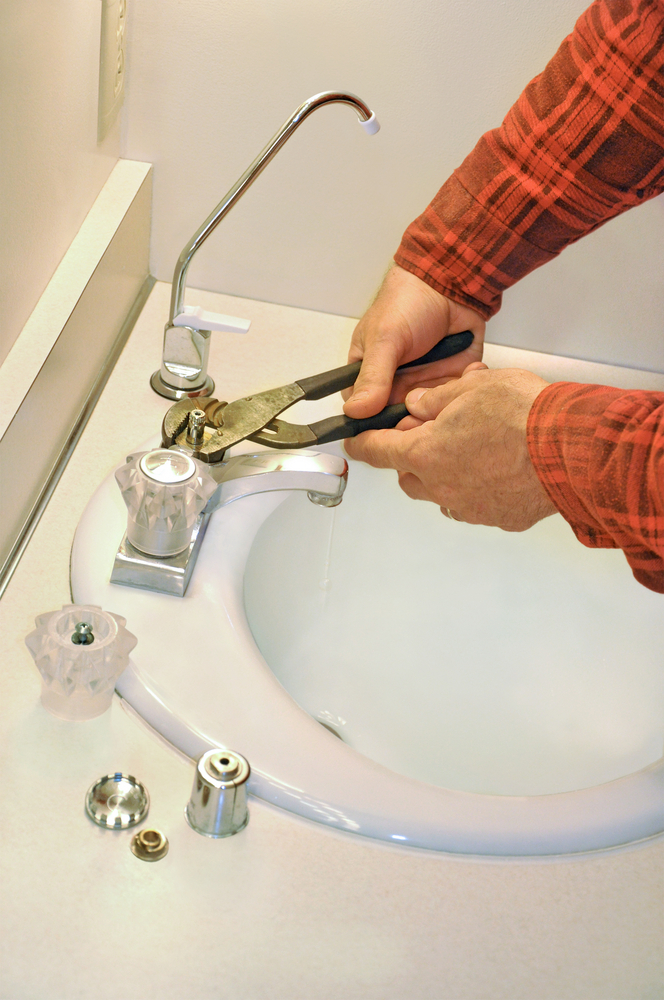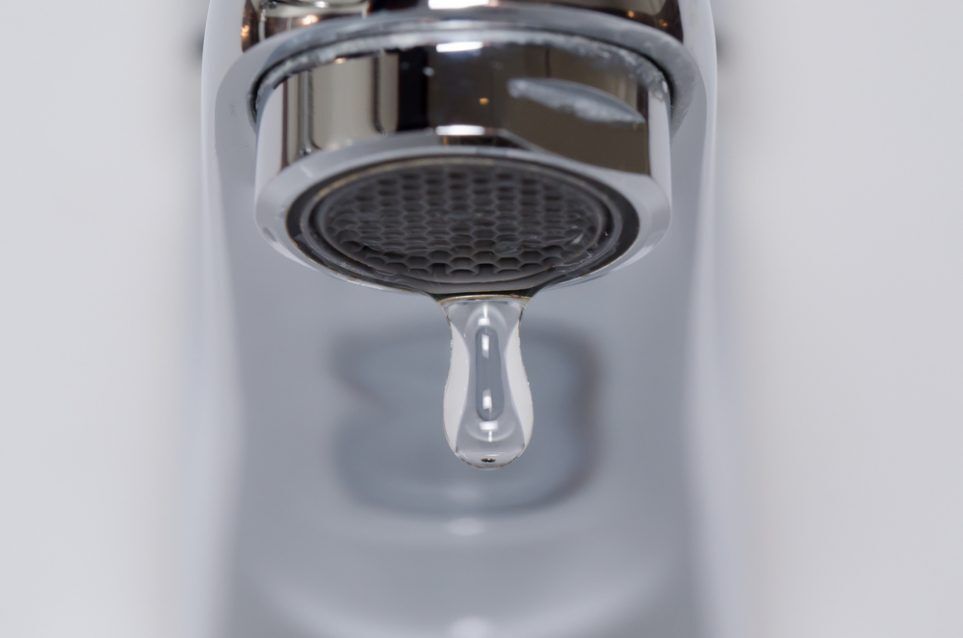How do you feel about What Causes Leaky Faucets & How To Fix Them?

Leaking taps could feel like a small hassle, but their influence goes beyond simply the aggravation of the sound. From wasting water to sustaining unneeded monetary prices and wellness threats, overlooking a trickling tap can result in different consequences. In this article, we'll look into why it's vital to address this common household concern without delay and successfully.
Waste of Water
Environmental Influence
Leaking faucets add dramatically to water waste. According to the Environmental Protection Agency (EPA), a solitary faucet dripping at one drip per secondly can lose more than 3,000 gallons of water each year. This not just stress water resources yet likewise affects ecological communities and wildlife depending on them.
Financial Expenses
Enhanced Water Costs
Beyond the environmental influence, dripping taps can pump up water costs significantly. The built up wastefulness gradually converts into greater utility expenses, which might have been avoided with prompt repair work.
Possible Residential Property Damage
Additionally, prolonged trickling can lead to damage to components and surfaces bordering the faucet. Water build-up can create staining, deterioration, and even architectural concerns if left ignored, causing additional fixing expenses.
Health and wellness Worries
Mold and Mildew Development
The constant existence of dampness from a dripping faucet develops a perfect setting for mold and mildew development. These fungis not only jeopardize interior air quality however additionally position health and wellness threats, particularly for individuals with respiratory system problems or allergies.
Waterborne Illness
Stationary water in trickling faucets can end up being a breeding ground for germs and various other microorganisms, increasing the danger of waterborne conditions. Contaminants such as Legionella germs prosper in stationary water, potentially resulting in severe health problems when consumed or breathed in.
DIY vs. Professional Repair work
Benefits and drawbacks of Do It Yourself Fixing
While some might try to deal with a trickling faucet themselves, DIY repairs come with their own set of difficulties. Without appropriate understanding and devices, DIY attempts can intensify the problem or result in incomplete repair work, extending the issue.
Benefits of Hiring an Expert Plumber
Hiring a professional plumber guarantees that the underlying reason for the dripping faucet is addressed effectively. Plumbings possess the competence and equipment to identify and fix tap concerns successfully, conserving time and reducing the danger of further damages.
Step-by-Step Overview to Taking Care Of a Dripping Faucet
Tools Called for
Prior to attempting to deal with a leaking faucet, collect the needed tools, including an adjustable wrench, screwdrivers, substitute components (such as washing machines or cartridges), and plumber's tape.
Usual Tap Issues and Their Solutions
Identify the type of faucet and the specific issue triggering the drip. Typical troubles consist of worn-out washers, corroded valve seats, or defective O-rings. Refer to producer directions or online tutorials for step-by-step assistance on repair work.
Safety nets
Routine Upkeep Tips
To stop trickling taps, do regular maintenance such as cleaning up aerators, examining for leaks, and replacing worn-out components immediately. Furthermore, think about installing water-saving devices or updating to extra reliable components.
Significance of Prompt Fixes
Addressing dripping taps as quickly as they're seen protects against additional water waste and potential damages, eventually saving both water and cash over time.
Influence On Building Worth
Understanding of Well-Maintained Residential Or Commercial Property
Preserving a home in good condition, including addressing upkeep problems like trickling taps, enhances its regarded value and worth among possible customers or renters.
Impact on Resale Value
Features with properly maintained plumbing components, including faucets, command greater resale values in the realty market. Addressing leaking faucets can add to a favorable perception during home evaluations and arrangements.
Ecological Duty
Specific Contribution to Preservation
Taking duty for dealing with trickling taps lines up with wider initiatives towards water preservation and ecological sustainability. Every individual's actions collectively make a significant impact on maintaining precious resources.
Sustainable Living Practices
By focusing on prompt repair services and adopting water-saving practices, people contribute to lasting living methods that benefit both present and future generations.
Conclusion
Resolving a trickling faucet surpasses plain benefit; it's a necessary action toward preserving water, minimizing financial prices, and safeguarding wellness and building. Whether with do it yourself repair services or expert support, taking action to deal with leaking taps is a small yet impactful method to advertise liable stewardship of sources and add to a healthier, much more sustainable future.
How to Fix a Leaky Faucet: Step-by-Step Repair Guide
A leaky faucet may seem like a simple annoyance, but if it's not fixed promptly, that leak could cost hundreds to potentially thousands. From water damage to mold, mildew, and high water bills, even a tiny leak can be catastrophic if left unattended. Damage like this can even affect the overall value of your home, so it's important to take the right approach for leaky faucet repair. You may need the help of a plumber in some cases, but we've got a few tips you can try on how to fix a leaky faucet before calling the pros.
Four Faucet Types
When you're learning how to fix a leaky faucet, the first step is knowing what kind of faucet you're working with! There are four common types.
Cartridge Faucets
Cartridge faucets come in one- or two-handled varieties. In one-handled cartridge faucets, hot and cold water combines in a single cartridge. In the two-handled versions, hot and cold water are controlled separately and mixed in the faucet.
Ball Faucets
Ball faucets have a single lever you push up and down to adjust the pressure and rotate to change the temperature. A slotted metal ball controls the amount of water allowed into the spout.
Compression Washer Faucets
They're the oldest type of faucet, but they're still used in many homes — especially older ones. Compression faucets have two separate handles that, when turned, raise or lower the washer that seals a water valve. This valve stops water from flowing through the faucet when it is turned off.
Disc Faucets
Disc faucets rarely need to be repaired due to their maintenance-free design. The water flow is controlled by two discs — the upper one raises and lowers against a fixed lower disc, creating a watertight seal. If your disc faucet starts leaking, you may need to replace the seals or clean residue buildup from the inlets.
Fixing a Leaky Faucet
Step 1: Turn Off the Water
Whether you're learning how to fix a leaky bathtub faucet or how to fix a leaky kitchen faucet, always turn off the water supply to your working area when you're fixing a leak. The last thing you want is a flood added to your list of things to fix.
Look for the shutoff valves below your sink or around the tub and turn them clockwise to stop the water flow. If your faucet doesn't have shutoff valves, you may need to turn off the water for the whole house. Check to make sure it's off by turning the faucet on. If nothing comes out, you're ready to start the repair.
Step 2: Take Apart the Faucet
How you disassemble your faucet depends on the type of fixture you have. You can use a flathead screwdriver to remove the caps on top of the handle or handles for cartridge and compression faucets. Inside, you should see handle screws. Unscrew these with a screwdriver to remove the handle.
Disc- and ball-style faucets will typically have an inlet screw near the handle, and removing that will reveal the interior of the faucet.
Detach the Valve Stem
For cartridge- and compression-style faucets, you'll see the inner valve stem or cartridge once you remove the faucet handles. If you have a compression faucet, unscrew the brass valve stem. If you have a cartridge faucet, pull out the cartridge. If your cartridge has been in place for a while, it may require some tools or extra force to remove it due to mineral deposits.
Examine and Replace Parts
Once you've removed the parts, check them out to confirm what needs to be replaced. You may see corroded rubber washers, O-rings, stems, or cartridges. On a ball-style faucet, check the seats and springs for damage.
If you need to repair a leaky disc faucet, check the inlet and seals on the lower disc.
Once you determine what parts must be replaced, visit your local hardware store. Bring the damaged parts with you to ensure you can purchase the correct components to replace them.
Clean Valves and Faucet Cavity
If you've removed a stem or cartridge, you may notice mineral buildup in the faucet's threads. Use white vinegar to clean the valve seat by soaking it for a few minutes, then scrub it away with a soft toothbrush and rinse with warm water. You can also clean the interior of the faucet in the same way.
Reassemble the Faucet
Once your faucet is cleaned and the required parts have been replaced, it's time to reassemble it. Put the pieces back together and slowly turn the water supply back on. Doing this slowly is crucial because too much initial water pressure can damage the new hardware you've just installed.
https://homewarranty.firstam.com/blog/how-to-fix-leaky-faucet

I have been very fascinated with Why It's Important to Fix Leaky Faucets and I really hope you enjoyed the blog entry. Do you know about another person who is sincerely interested in the subject? Why not promote it. Thanks a lot for your time spent reading it.